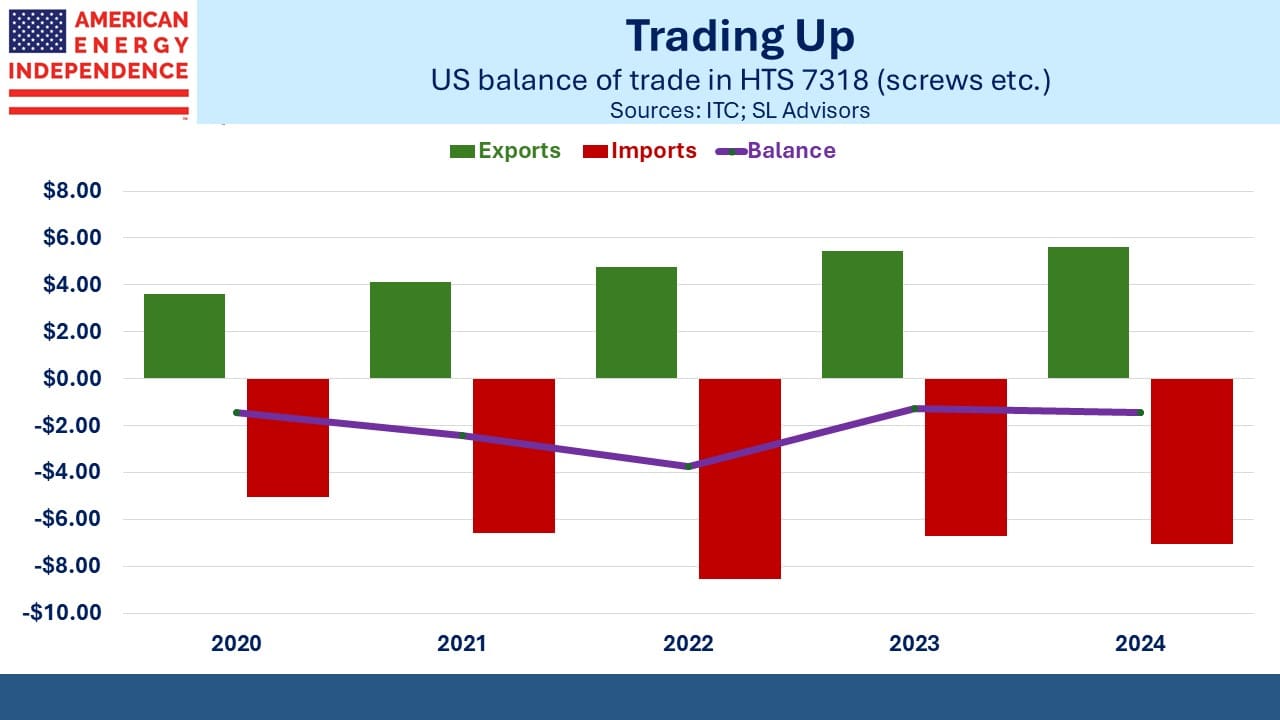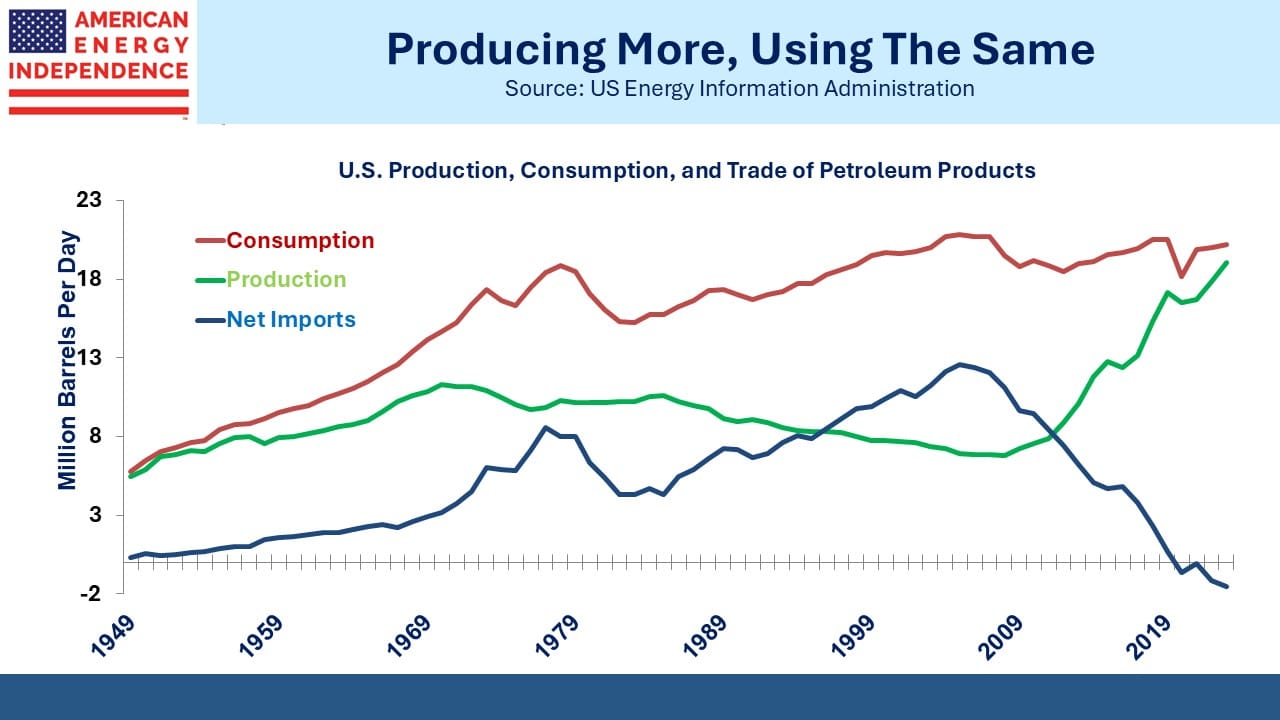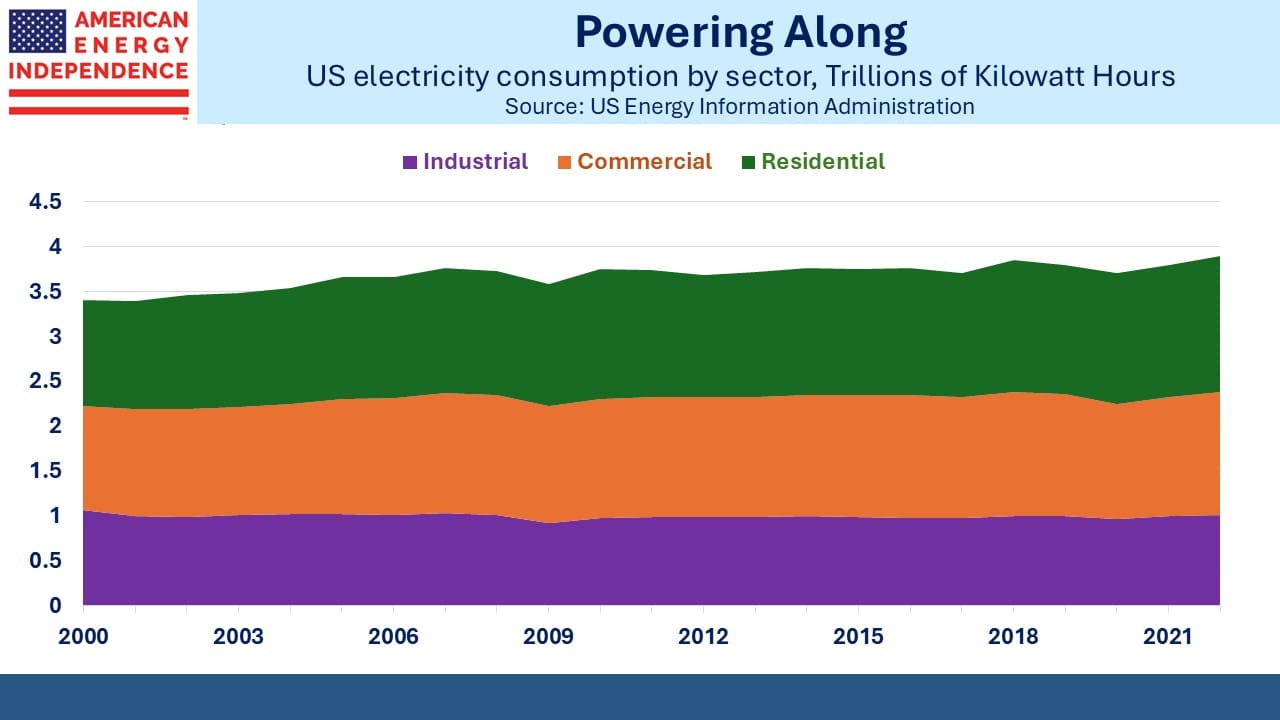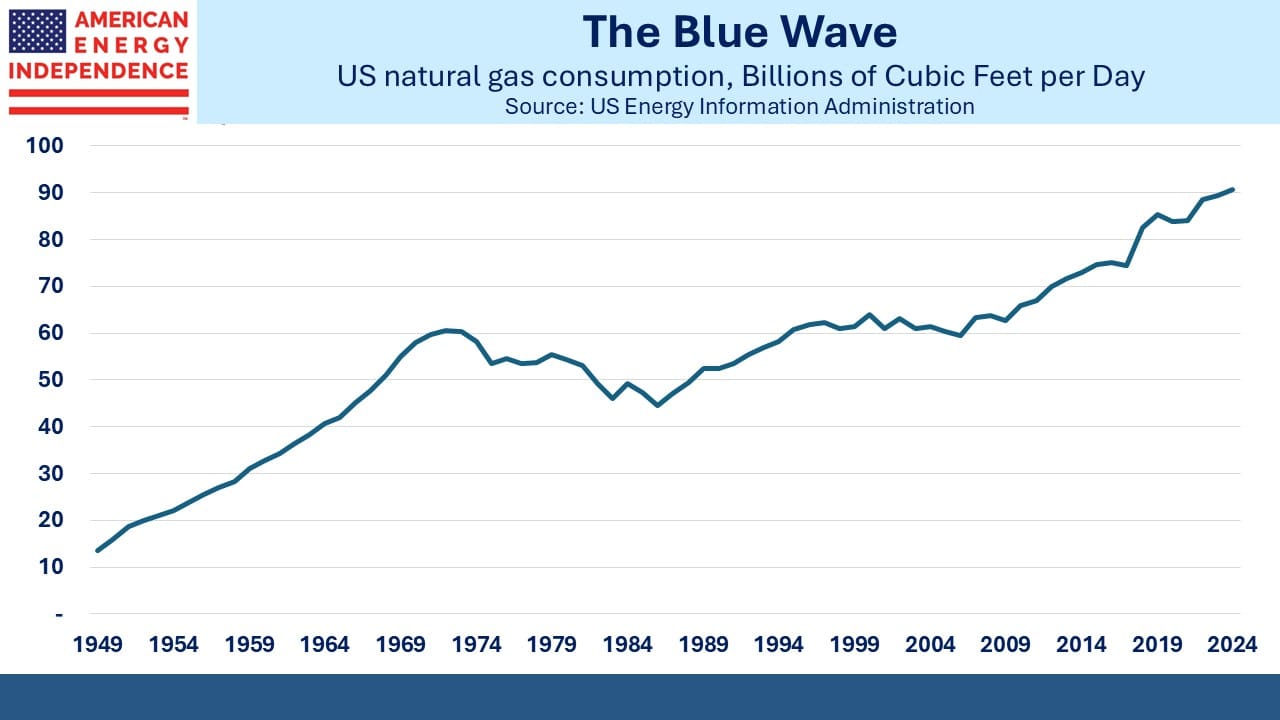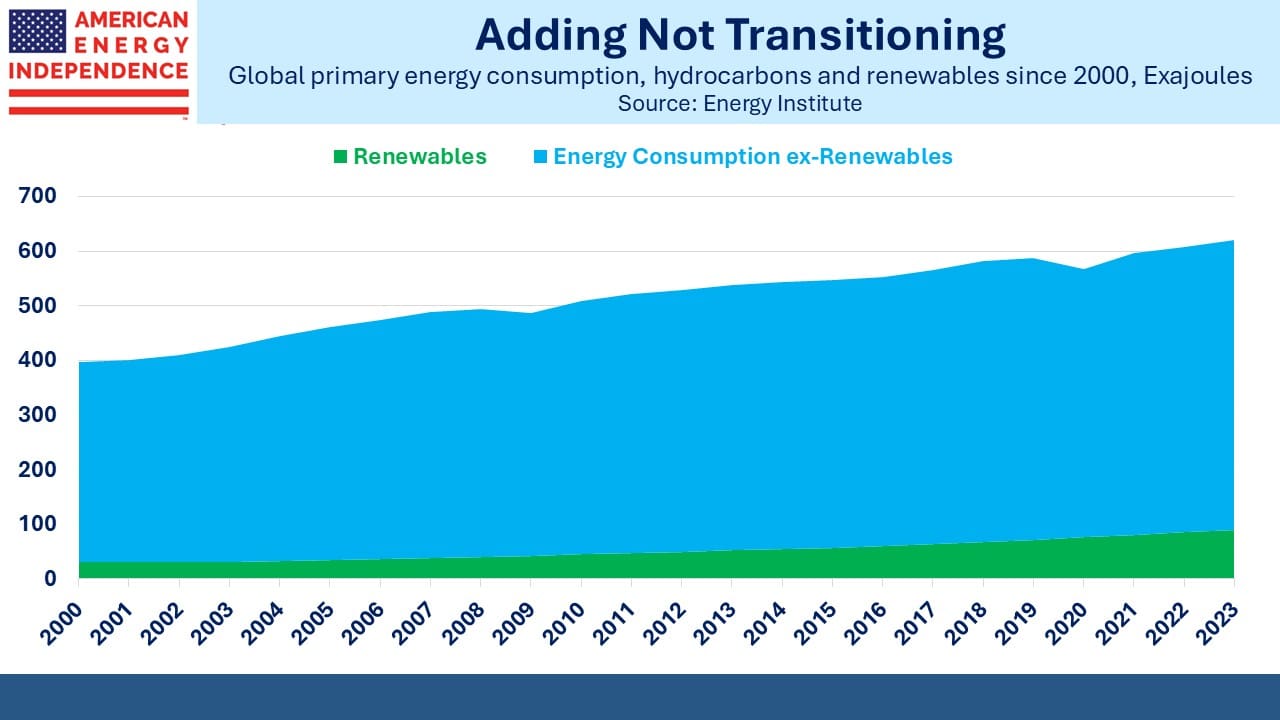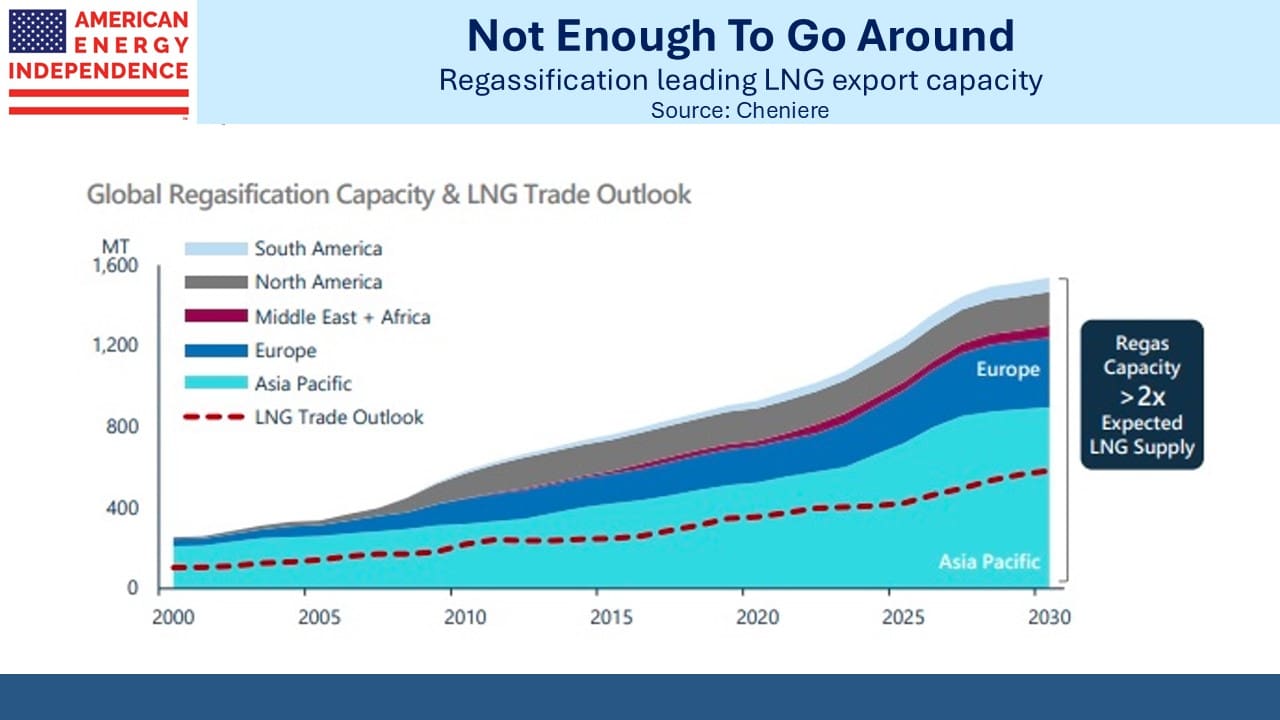Screwed By Tariffs

Americans did vote for tariffs when we elected Donald Trump. Many perhaps thought they’d be implemented with a clearer strategic purpose. I had hoped we’d use them to open up foreign markets such as the EU, reducing our trade deficit by exporting more not by importing less. And most voters probably weren’t voting for a recession, odds on which Goldman Sachs revised up to 35% for next year.
Among the improbable targets of tariffs on steel and aluminum imports are screws, along with bolts, nuts, coach screws, screw hooks, rivets, cotters, cotter-pins, washers (including spring washers) and similar articles, of iron or steel. These are all members of the Harmonized Tariff Schedule (HTS) code 7318.
When a blunt instrument is applied with force, it will inevitably hit more than the intended target. Last year we imported $7.05BN of HTS code 7318 products and exported $5.63BN, for a trade deficit of $1.43BN.
There’s no particular trend in the series. The net balance in HTS 7318 was worse in 2022 than last year. Exports have been growing at 12% annually, faster than imports at 9%. We bought almost two thirds of our HTS 7318 imports from just three countries: Taiwan, China and Japan. The two biggest buyers of our exports were Canada and Mexico under the USMCA and no doubt including the auto sector’s integrated cross-border assembly processes.
China’s the world’s biggest exporter in this category and the US is the biggest importer. But that’s true for many traded items.
The trade deficit in 7318 doesn’t seem especially problematic. Manufacturing screws isn’t obviously in the national interest. If other countries can make them better and cheaper, go for it. The net deficit in 7318 is only 25% of our exports. There’s a lot of two-way flow in the category, as what economists call comparative advantage drives production to where it’s done relatively better.
Somebody is getting screwed with 7318 tariffs, and the market fears it might be the American worker.
Adding manufacturing jobs is always good, but US manufacturing employment is in fine shape. A decades-long decline ended when the shale revolution began to lower domestic gas prices.
During tariff turmoil, midstream energy has been showing its value as defensive sector, beating the S&P500 by 17% since the election. A Fox News poll found that 69% of Americans believe tariffs will lead to higher prices. White House trade counselor Peter Navarro claimed they’d act as a tax cut, a fringe view that’s simply wrong.
It’s not only that US energy has limited exposure to tariffs. Many pipelines are regulated by FERC which links price increases to PPI. The FOMC’s most recent Summary of Economic Projections showed policymakers had shifted their growth expectation down and inflation up, hence the stagflation headlines that accompanied its release.
Pipeline investors have little to fear from inflation given that around half the industry’s EBITDA is linked to PPI. In 2022 when inflation reached 9%, midstream returned +21% while the S&P500 was down 18%.
The market is pricing in at least two rate cuts by the end of the year, suggesting investors expect the Fed to regard tariff-linked inflation as temporary. In this scenario, midstream earnings will get a boost from the PPI linkage while maintaining relatively attractive yields.
Energy consumption is very stable (see Midstream Is About Volumes). Power generation is rising because of AI demand after two decades of being flat. Liquids (about half of which is gasoline) have been between 20 and 21 Million Barrels per Day for many years. Natural gas consumption continues to grow strongly. For fifteen years this was driven by the coal to gas switch in US power generation. Now increasing LNG exports and the growth in data centers are the drivers.
There’s little reason to expect any of these trends to change.
Morgan Stanley noted that Oklahoma’s natural gas rig count has risen from 44 to 54 this year in response to higher prices. They expect the beneficiaries to include Energy Transfer, Oneok and Targa Resources as E&P firm Anadarko pushes increased volumes through their infrastructure.
Shipping giant AP Møller-Maersk expects the EU’s proposed maritime emissions trading scheme to encourage the use of gas-powered engines, saying it was, “highly likely that fossil LNG remains the cheapest option.”
LNG stocks have sagged recently on fears that a cease-fire in Ukraine could see increased Russian gas exports to the EU. A senior coalition member in Germany’s new government recently said the sanctions regime was hurting the EU more than Russia. We continue to think the White House would not look kindly on a resumption of gas shipments through Nordstream.
We have two have funds that seek to profit from this environment:
Energy Mutual Fund Energy ETF

